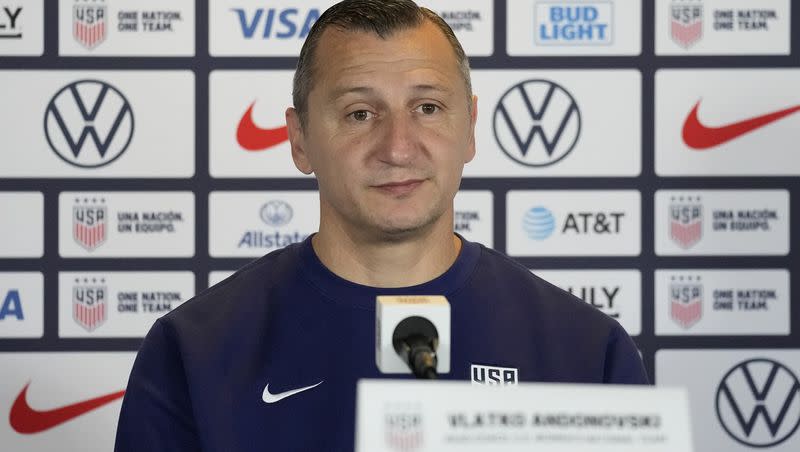Opinion: Should World Cup rosters be expanded?

Much to the dismay of many national team coaches, FIFA denied requests to increase roster sizes for the 2023 Women’s World Cup from 23 to 26 players.
England coach Sarina Wiegman, Germany coach Martina Voss-Tecklenburg and U.S. coach Vlatko Andonovski spoke publicly about their desires for roster expansion. Andonovski said “that most, if not all the head coaches” were supportive of increasing the roster sizes, according to USA Today.
“We wanted to bring it to 26,” Wiegman said after releasing England’s roster, according to ESPN. “I don’t think having 26 makes the injury risk lower, (but) I think you then have more options when something happens and you can keep someone in the squad and give more rest.”
Germany head coach Martina Voss-Tecklenburg wanted a bigger roster “to avoid the heavy workload on players from competitions,” according to USA Today.
Ahead of the 2022 FIFA Men’s World Cup, rosters were expanded from 23 to 26. FIFA cited the “unique timing” of the tournament being in the middle of most professional leagues and the “disruptive effects caused by the COVID-19 pandemic” as the reasoning behind the expansion.
Related
Is the reason FIFA kept the roster size as is because for the first time it is paying each player on a World Cup roster $30,000, which is an amount that will increase with each round a team advances through? Three extra players on the 32 rosters would cost it an extra $2.88 million in the group stage alone.
Regardless of the reasoning, it comes at a cost for the players’ health and safety.
A survey of team physicians for the 24 teams competing in the 2019 FIFA Women’s World Cup found the No. 1 intrinsic risk factor for noncontact player injury during the tournament was “accumulated fatigue (i.e., throughout a season/congested match periods).”
It also found that the top three extrinsic risk factors were “reduced recovery time between matches,” “a congested match schedule/number of matches played during a club season” and “training load prior to the World Cup.”
The survey also found that players belonging to 10 of the most prominent women’s leagues had played in four to 12 club games in the six months leading up to the tournament. Once again, this World Cup comes on the heels of the conclusion of several women’s leagues, meaning players have already “accumulated fatigue.”
The United States’ NWSL is the league most affected by the World Cup with the tournament occurring in the middle of its season. Players in the NWSL could have played in up to 13 games in the three months leading up to the tournament.
Sixty of the players who made World Cup rosters play in the NWSL, according to an NWSL press release. While that’s only 8% of the players playing in the World Cup, half of the teams in the World Cup feature NWSL players, including some big-name players.
All but one of the 23 players on the roster of FIFA’s No. 1-ranked team, the United States, plays in the NWSL.
Both Canada and Brazil, the No. 7- and 8-ranked teams, respectively, have eight players on their rosters that play in the NWSL, including Brazil’s Marta and Canada’s Christine Sinclair, who are arguably two of the best players in the world and will be playing in their sixth World Cup.
Related
Seven of the NWSL’s top 10 goal scorers this season are on World Cup rosters, according to the NWSL. One of the three top scorers not on a World Cup roster, former BYU Cougar Ashley Hatch, is the second leading scorer this season and was an obvious snub from Team USA.
I’m all for expanding the roster to protect the players, especially if the 2026 Men’s World Cup teams feature 26 players again. But I’m not in support of an increase with the purpose of including roster snubs.
This year’s snub list would have been longer if Mallory Swanson, Becky Sauerbrunn and Catarina Macario weren’t injured. Those injuries allowed three players to make the roster, who otherwise would have been added to the snub list.
Having too many World Cup roster-worthy players and a long snub list is a good problem for the United States — and other countries — to have. It’s a sign of the growth of women’s soccer, both domestically and globally.
But a real sign of the growth of women’s soccer would have been if FIFA protected its players and listened to the concerns of the coaches. If FIFA really cares about the players like it says it does, we will be cheering on 26 players wearing red, white and blue in 2027 — not just 23.


